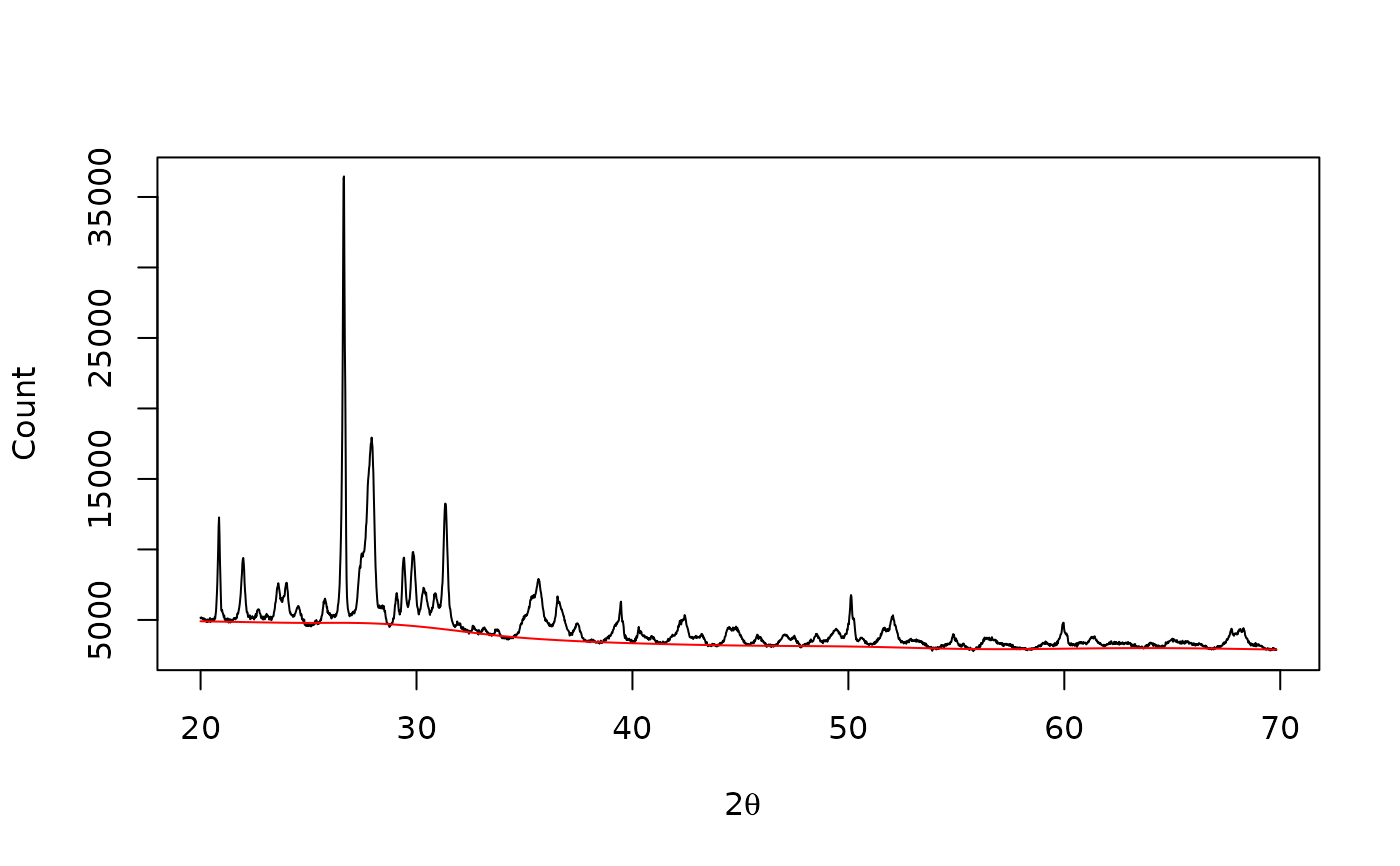Baseline estimation with asymmetric least squares smoothing.
Usage
baseline_asls(x, y, ...)
# S4 method for class 'numeric,numeric'
baseline_asls(x, y, p = 0.01, lambda = 10^4, stop = 100)
# S4 method for class 'ANY,missing'
baseline_asls(x, p = 0.01, lambda = 10^4, stop = 100)Arguments
- x, y
A
numericvector. Ifyis missing, an attempt is made to interpretxin a suitable way (seegrDevices::xy.coords()).- ...
Currently not used.
- p
A length-one
numericvector giving the asymmetry (\(0.001 < p < 0.1\) is a good choice for a signal with positive peaks).- lambda
A length-one
numericvector giving the smoothing parameter.- stop
An
integergiving the stopping rule (i.e. maximum number of iterations).
Value
Returns a list with two components x and y.
References
Eilers, P. H. C. & Boelens, H. F. M. (2005). Baseline Correction with Asymmetric Least Squares Smoothing.
See also
Other baseline estimation methods:
baseline_linear(),
baseline_peakfilling(),
baseline_polynomial(),
baseline_rollingball(),
baseline_rubberband(),
baseline_snip()
Examples
## X-ray diffraction
data("XRD")
## Subset from 20 to 70 degrees
XRD <- signal_select(XRD, from = 20, to = 70)
## Plot spectrum
plot(XRD, type = "l", xlab = expression(2*theta), ylab = "Count")
## Polynomial baseline
baseline <- baseline_asls(XRD, p = 0.005, lambda = 10^7)
lines(baseline, type = "l", col = "red")

